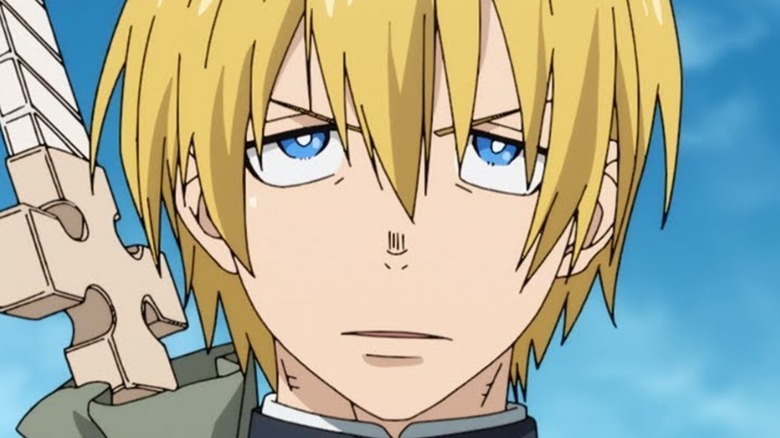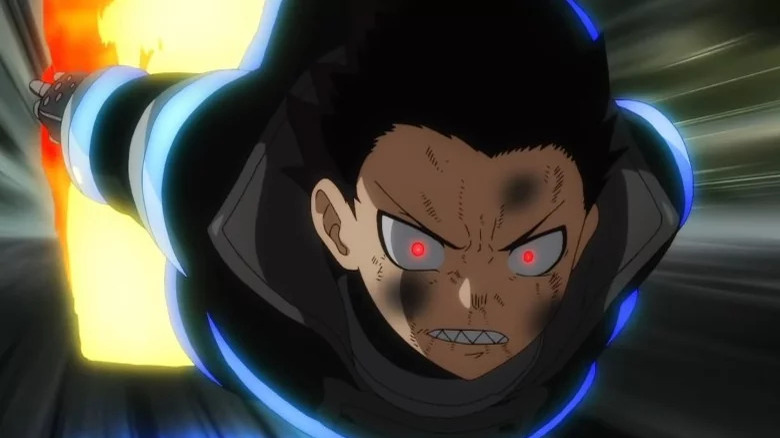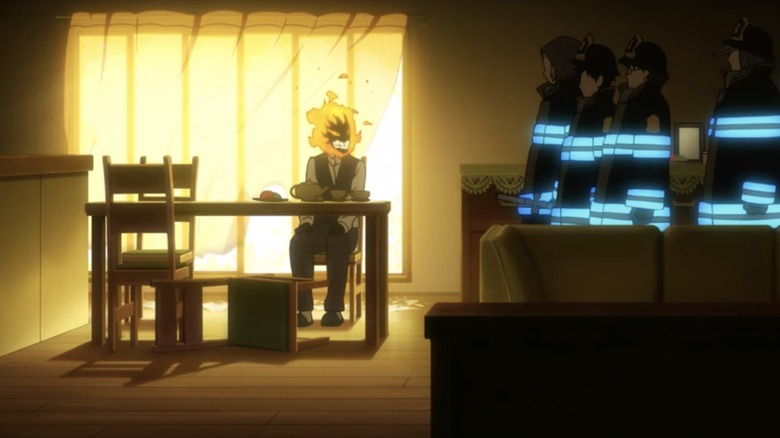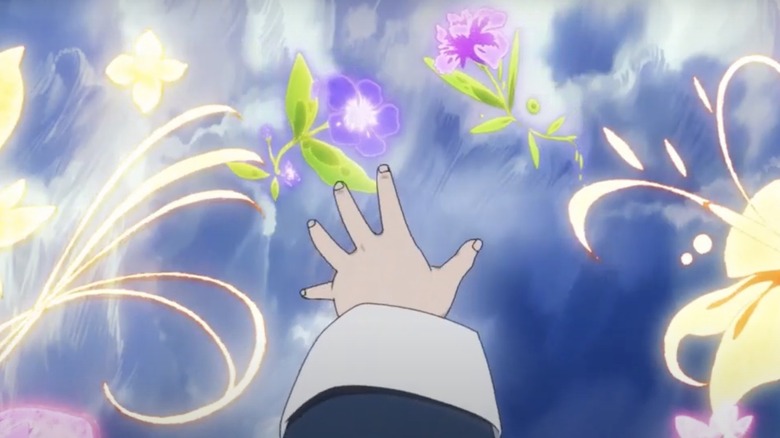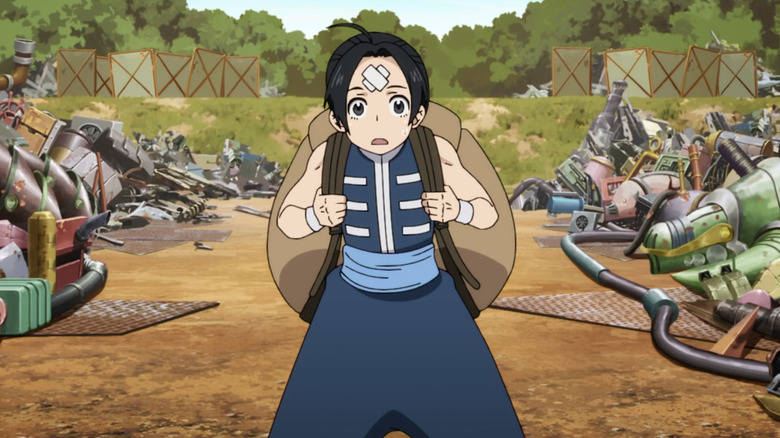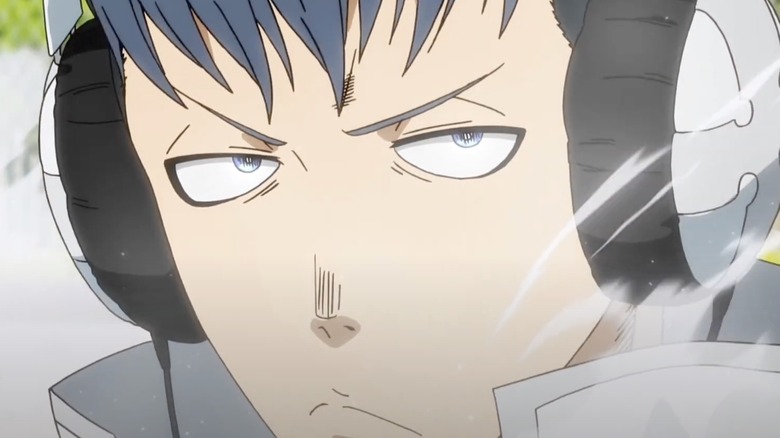Major Differences Between The Fire Force Manga And The Anime
Out of all the anime that have been released over the past few years, one of the (literal) hottest shows to have shown up in recent memory has got to be "Fire Force." The series, adapted from the manga of the same name by Atsushi Ōkubo, focuses on the pyrokinetic firefighters of Special Fire Force Company 8 and their newest recruit Shinra Kusakabe, a third generation pyro with the nickname "Devil's Footprints." When Shinra and the rest of Company 8 discover a mysterious doomsday cult with ties to his mother's death, it's up to them to investigate if there's any corruption within the other companies, while also ending attacks from combustible creatures (a.k.a. Infernals) for good.
The anime from David Production, the animation studio also behind the hit anime "JoJo's Bizarre Adventure," has aired for two seasons at the time of this writing. As popular as it is, there are some key differences that exist between the show and the manga of which it's based on.
Shinra gets custom-made gear
Shinra's nickname of Devil's Footprints is actually more literal than one would think. As a third generation pyrokinetic, Shinra has the ability to fly around by shooting flames from his feet. From the very beginning of the series, Shinra sees this ability as an opportunity to help others as a Fire Force member and be a hero, no matter how many shoes burn up along the way.
In both the manga and anime, Shinra and his power-set are introduced by saving the life of Sister Iris, the assigned nun of Company 8. After this fiery first impression, the charred-feet protagonist is given permission to get his firefighting gear custom-made to his own liking, which is something that doesn't occur in the manga. This is a small but harmless change made by the anime, whereby letting Shinra wear gear that won't immediately combust is addressed from the very beginning.
A small bit of humanity is added to the Infernals
The task that's given to each Fire Force company member is to rid the world of Infernals, first generation cases of spontaneous human combustion (not to mention more powerful variations from subsequent generations known as Demons). In the world of "Fire Force," these superpowered firefighters must come to grips with the fact that every interaction with an Infernal is also an interaction with an innocent human being who has randomly combusted.
Shinra learns this early on in his second mission in the series when he meets an Infernal who chooses to sit calmly before being extinguished. It's a powerful scene in both the manga and the anime, as it shows a hidden sense of humanity that can reside with the Infernals. The big difference here between the original material and the show is that the collected Infernal actually has some dialogue at the same time they're terminated, saying a name that could refer to someone special from that human's life. This is a subtle way the show adds more humanity to the Infernals.
The anime altered some scenes in response to tragedy
As is the case with most anime, there are various elements that tend to get changed in response to certain requirements in television. These revisions can range from minor edits in dialogue to scenes that play out very differently than in the source material. "Fire Force" is no stranger to these changes, with certain moments slightly altered throughout the series that fortunately don't deviate from the intended tone and direction of the manga. In the case of its first season, however, some other changes needed to be made following the tragic fire at Kyoto Animation in 2019.
The devastating arson attack occurred just a few days before the airing of the show's third episode. The original airdate, according to ANN, was delayed a week and aired the Friday after with reported edits to the color scheme of flames (i.e. making them look more unrealistic) along with some minor changes in the show's narration. Of all the changes made from the "Fire Force" manga in the anime, this one may have been the most necessary, given the timing of the horrible incident.
Fire Force changed how Yū was originally introduced
Another common case that occurs with almost every adaptation is the choice of deleting scenes that were present in the source material but serve no real beneficial purpose in the story. There's only so much you can cram into a 22-minute episode, which makes this process all the more common. "Fire Force" is obviously no exception to that.
One of the Fire Force characters we meet later on in the series is Yū, a kind, young boy who serves as the apprentice to Vulcan, an expert in engineering. Vulcan and Yū are introduced together in the anime when the members of Company 8 arrive at their compound to convince them to join their cause.
In the manga, Yū is actually introduced before this in a sequence where Shinra saves him from getting killed by Setsuo Miyamoto, a self-aware Flame Human. It's an introduction that, while interesting, serves no real purpose in advancing the world-building of the series.
Manga-only cool moments with Karim are left out
One character with a unique pyrokinetic power-set has to be Karim Flam, a priest and Second Generation lieutenant of Special Fire Force Company 1. Flam is able to generate ice by way of Thermoacoustic Refrigeration, which allows him to collect heat energy from an external source inside the instrument (this being his tuba) and then transform said energy into sound, decreasing its temperature. Ice is eventually generated by this process, which can be launched at opponents or used to incapacitate Infernals (via Fire Force Wiki).
Both the manga and the anime give a good showcase of Flam's (literally) cool moveset, but it's only in the manga where you can find an extended sequence the showcases Flam's diverse ways to manipulate ice against a large Infernal running around the city. While the anime is a faithful adaptation of the manga, this is just one of many interesting character moments that can only be found in the original text.
Season 3 of "Fire Force" currently has no official release date, but its first two seasons can be streamed on Funimation and Crunchyroll. Another anime from David Production, "Jojo's Bizarre Adventure: Stone Ocean," is currently airing on Netflix.
